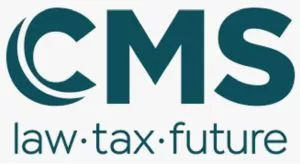On 26 July 2024, the European Supervisory Authorities (the "ESAs") published an updated version of the consolidated questions and answers (the "Q&As") on the Sustainable Finance Disclosure Regulation 1 (the "SFDR").
The updated Q&As clarify, inter alia, elements related to (i) the responsibility of registered AIFMs regarding the Article 10 SFDR requirements, (ii) the assessment and measurement of "sustainable investments" under Article 2(17) SFDR, (iii) the calculation of investments aligned with the EU Taxonomy and of principle adverse impact ("PAI") indicators, together with the look-through approach, (iv) accountability in case of delegation and with respect to the definition of "sustainable investments", (v) efficient portfolio management techniques in case of UCITS disclosing under Article 9, (vi) website disclosures, (vii) disclosures of good governance in case of special purpose vehicles holding real assets and (viii) the application of Article 6(2) SFDR to financial advisers providing MiFID II investment advice.
Most of the clarifications made by the ESAs under the updated version of the Q&As are welcomed by investment fund managers and financial advisers, as many challenges in the implementation of SFDR have been highlighted by recent consultations.
To read the entirety of updated consolidated Q&As, please read the official publication here. Key elements are detailed below.
1. Even without a website, registered AIFMs must publish the information required under Article 10 SFDR
The ESAs confirm that a registered AIFM (or "sub-threshold AIFM") which has not set-up a website must ensure that the information required under Article 10 SFDR is made available on (i) the financial product's own website, (ii) the website or the group or (iii) a website that is established for that purpose.
This is in line with the confirmation provided in the first version of the Q&As that SFDR, including the website disclosure requirements, is applicable to sub-threshold AIFMs.
2. Confirmation of the look-through approach when considering the PAI indicators in case of indirect investments through a UCITS
The consolidated Q&As dated July 2024 provide several clarifications around the consideration and calculation of PAI indicators.
Amongst them, it would be noted that, as previously confirmed in the Q&As 2, PAI indicators relating to carbon footprint and greenhouse gas emissions, are measured at the level of the underlying investee companies, irrespective of whether the investment in them is direct or indirect (e.g. through a UCITS).
However, the updated Q&As further confirm that the exposure to companies active in the fossil fuel sector should be assessed on a pass/fail basis. In that respect, any companies deriving revenues from any of the activities mentioned in the definition of "fossil fuels" under PAI indicator 4 should be considered as "failing" companies.
3. "Sustainable investments" assessment (i) in case of funds of funds and investments through UCITS, (ii) at the level of the economic activity or at the investment levels and (iii) in case of delegation
As one of the most important focus points in the implementation of SFDR, the definition and assessment of "sustainable investments" under Article 2(17) SFDR is clarified, once more, by the ESAs.
The updated Q&As namely provide clarification on the possibility to measure "sustainable investments" at the level of the economic activity, when the investee companies conduct different economic activities, or at the level of the investment itself 3. In that respect, the Q&As contain illustrations with hypothetical financial product examples, with different strategies and objectives, including bond focus and equity focus.
In addition, the ESAs confirm that the approach adopted with respect to PAI measurement should be applied to "sustainable investments" measurement in case of investments through a UCITS. Where a sustainable investment is an investment in another financial product, the financial market participant should look through the underlying investments of that financial product to ensure that the investment qualified as a "sustainable investment" under Article 2(17) SFDR and to assess the proportion of sustainable investments accurately. In view of the flexibility given to financial market participants to define their own understanding of "sustainable investments" for each product 4, the Q&As further clarify that, in such case, the financial market participant should ensure that the underlying investments of the other SFDR financial products comply with its own application of Article 2(17) SFDR.
Finally, the ESAs confirm that, in case of delegation of functions by the investment fund manager of a financial product, the delegating manager is the one responsible to ensure that any investments considered "sustainable investments" conform to its own application of the definition, irrespective of whether management is delegated or not.
4. EPM techniques of a UCITS may fall under the "remaining portion" of Article 9 fund
Following the confirmation that Article 9 funds may have, next to their sustainable investments, a proportion of investments "for certain specific purposes such as hedging or liquidity", provided that those are in line with the sustainable objective of the fund 5 (i.e. "the remaining portion"), the updated Q&As confirm the "efficient portfolio management techniques" ("EPM"), such as those referred to in Article 51(2) of the UCITS Directive 6, can only fall within the "remaining portion" if used for hedging or liquidity purposes only.
EPM used for any other purposes may be part of the portfolio of an Article 9 fund only if they meet the definition of "sustainable investments" applied to such fund.
The ESAs also take the opportunity to clarify that investments in a money market fund may not automatically be considered as liquidity for the purpose of Article 9 funds, as it depends on the type of money market fund investments (e.g. on whether it qualifies as cash equivalent under IFRS accounting rules).
5. Clarity around the publication of the SFDR annex on the website and Article 10 SFDR
Another practical point clarified by the ESAs relates to the publication of the completed SFDR annex on the website. First, it is clear under the Q&As that there is no obligation to make the SFDR annex publicly available to publish (part of) the website disclosure requirements in Article 10 SFDR.
The ESAs however expect that, in case the completed annex is voluntarily published, the obligation to publish the information referred to in Article 10(1) (c)-(d) (i.e. the information referred to in Article 8,9 and 11 SFDR) should be fulfilled by publishing the completed SFDR annex.
In that respect, the IFM have the choice between (i) publishing the SFDR annex and limiting the website disclosures to the sections that are not already covered by the information disclosed under Article 8 or Article 9 SFDR, as applicable or (ii) publishing the entire information required under the website disclosures of Article 10 SFDR, including those covered by the SFDR annex, in case the SFDR annex is not published as such.
6. Financial advisers under MiFID II and application of Article 6(2) SFDR
Whereas market players were asking whether the disclosure obligations related to the consideration of sustainability risks would apply only for each recommendation concerning a "financial product" as defined under SFDR, the ESAs confirm that "investment advice" is not restricted to the investment advice about financial products, as defined by SFDR, so that Article 6(2) SFDR would be applicable in good time before the client is bound by any agreement for the provision of investment advice.
7. Good governance practice check not required for SPV
Following the clarification that investment fund managers do not need to assess good governance practices for government bonds 7, the updated version of the Q&As confirms that special purpose vehicles ("SPVs") holding real assets do not require to have a good governance practice check, when the SPV's sole purpose is to hold real estate assets, as only investee companies do.
As market players are expecting a reform of the SFDR regime, as suggested by the ESAs 8 and following the consultation pursued by the European Commission 9, there is an increase of uncertainty around the long-term applicability of concepts developed under SFDR within the scope of the future regulatory framework of sustainable finance disclosures. That said, such reform of SFDR would not be expected to enter into force within the next months (or years) so that the sustainability-related disclosures regime, as applicable today and amended from time to time, continues applying to SFDR in-scope entities that are required to comply with the relevant provisions.
Regular updates of the SFDR Q&As by the ESAs are therefore welcomed, especially as other pieces of regulation enter into the scope of the sustainable finance disclosures framework.
For more information, please read the entire consolidated Q&As and reach out to our experts, Aurélien Hollard, Julie Pelcé or Clémence Richard.
Footnotes
1. Regulation (EU) 2019/2088, as supplemented by Commission Delegated Regulation (EU) 2022/1288, as amended
2. SFDR Q&As Part III. Q2, published on 17 November 2022
3. SFDR Q&As Part II Q1 published on 6 April 2023
4. Ibid.
5. SFDR Q&As Part V Q1 published on 14 July 2021, amended on 6 April 20237 and the question was amended on 12 December
6. Directive 2009/65/EC
7. SFDR Q&As published on 17 May 2022
8. Joint ESAs Opinion dated 18 June 2024 https://www.esma.europa.eu/sites/default/files/2024-06/JC_2024_06_Joint_ESAs_Opinion_on_SFDR.pdf and Final Report on draft Regulatory Technical Standards on the review of PAI and financial product disclosures in the SFDR Delegated Regulation - European Union (europa.eu) dated 4 December 2023
9. finance-2023-sfdr-implementation - European Commission (europa.eu)
The content of this article is intended to provide a general guide to the subject matter. Specialist advice should be sought about your specific circumstances.




